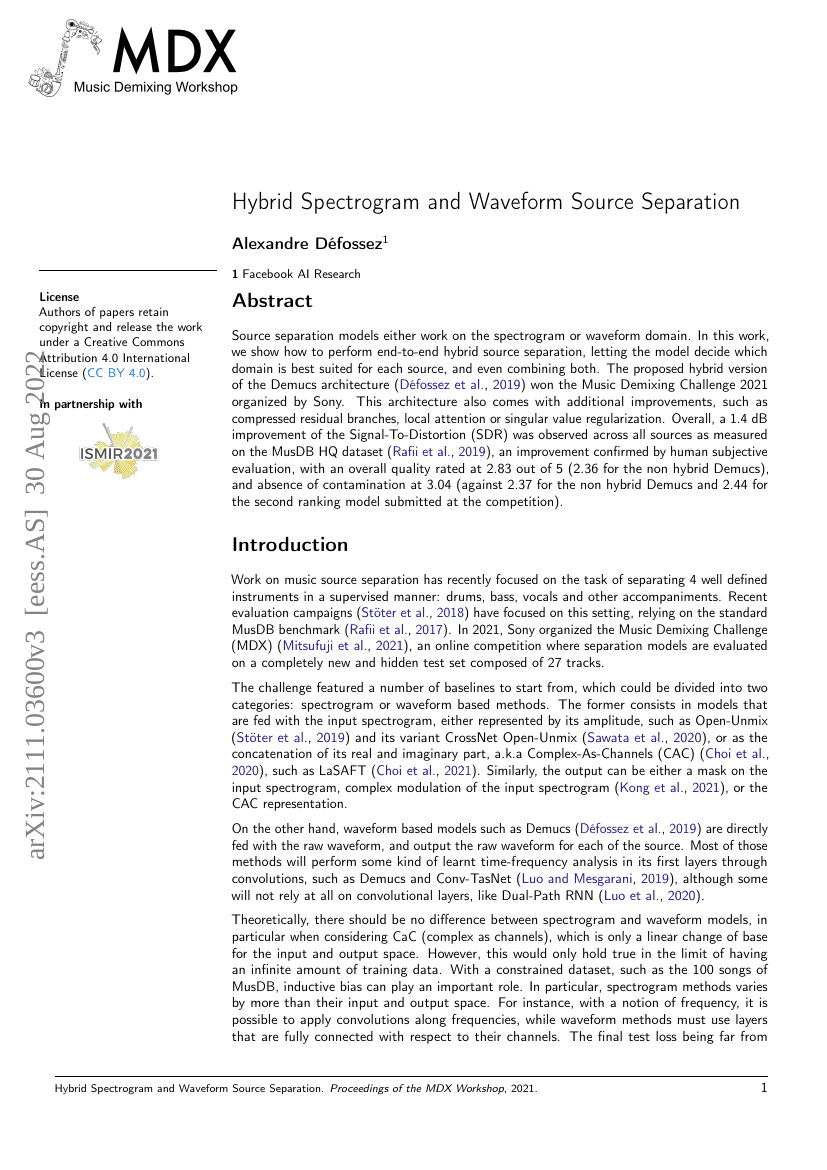Command Palette
Search for a command to run...
Alexandre Défossez

Abstract
Source separation models either work on the spectrogram or waveform domain. In this work, we show how to perform end-to-end hybrid source separation, letting the model decide which domain is best suited for each source, and even combining both. The proposed hybrid version of the Demucs architecture won the Music Demixing Challenge 2021 organized by Sony. This architecture also comes with additional improvements, such as compressed residual branches, local attention or singular value regularization. Overall, a 1.4 dB improvement of the Signal-To-Distortion (SDR) was observed across all sources as measured on the MusDB HQ dataset, an improvement confirmed by human subjective evaluation, with an overall quality rated at 2.83 out of 5 (2.36 for the non hybrid Demucs), and absence of contamination at 3.04 (against 2.37 for the non hybrid Demucs and 2.44 for the second ranking model submitted at the competition).
Code Repositories
Benchmarks
| Benchmark | Methodology | Metrics |
|---|---|---|
| music-source-separation-on-musdb18 | Hybrid Demucs | SDR (avg): 7.72 SDR (bass): 8.67 SDR (drums): 8.58 SDR (other): 5.59 SDR (vocals): 8.04 |
| music-source-separation-on-musdb18-hq | Hybrid Demucs | SDR (avg): 7.68 SDR (bass): 8.76 SDR (drums): 8.24 SDR (others): 5.59 SDR (vocals): 8.13 |
Build AI with AI
From idea to launch — accelerate your AI development with free AI co-coding, out-of-the-box environment and best price of GPUs.